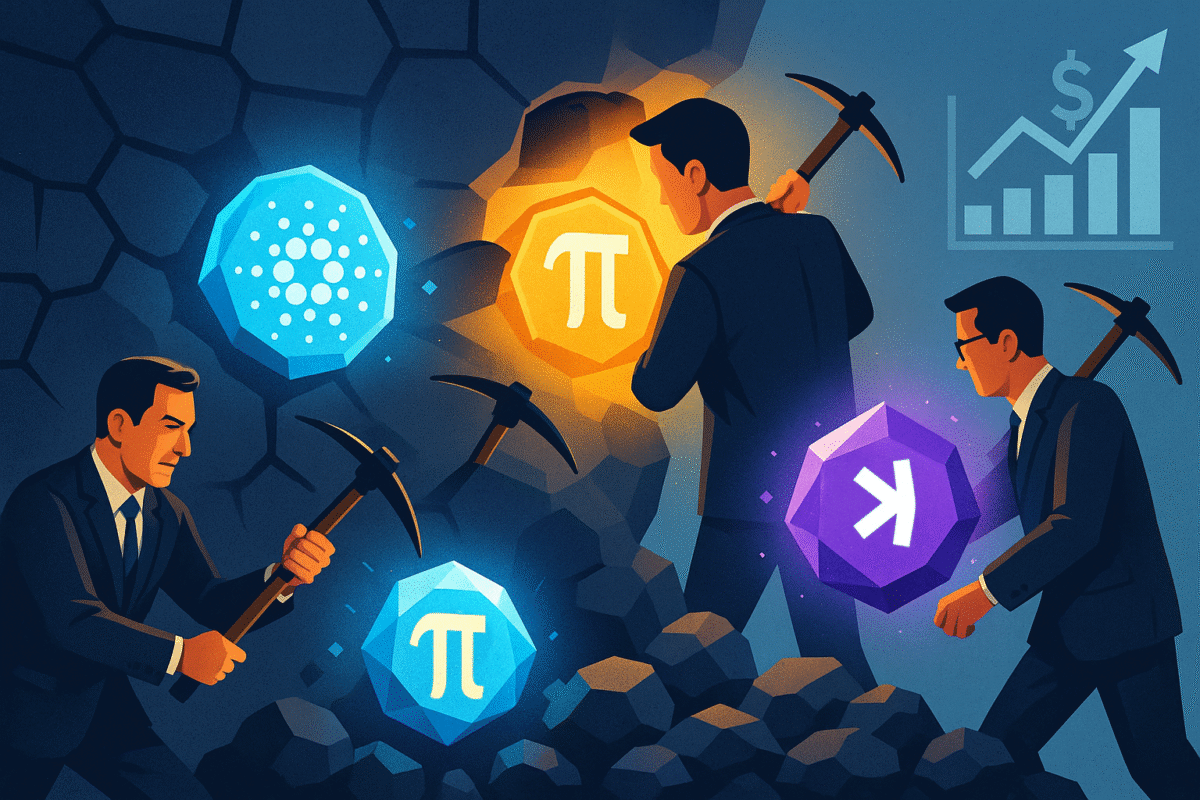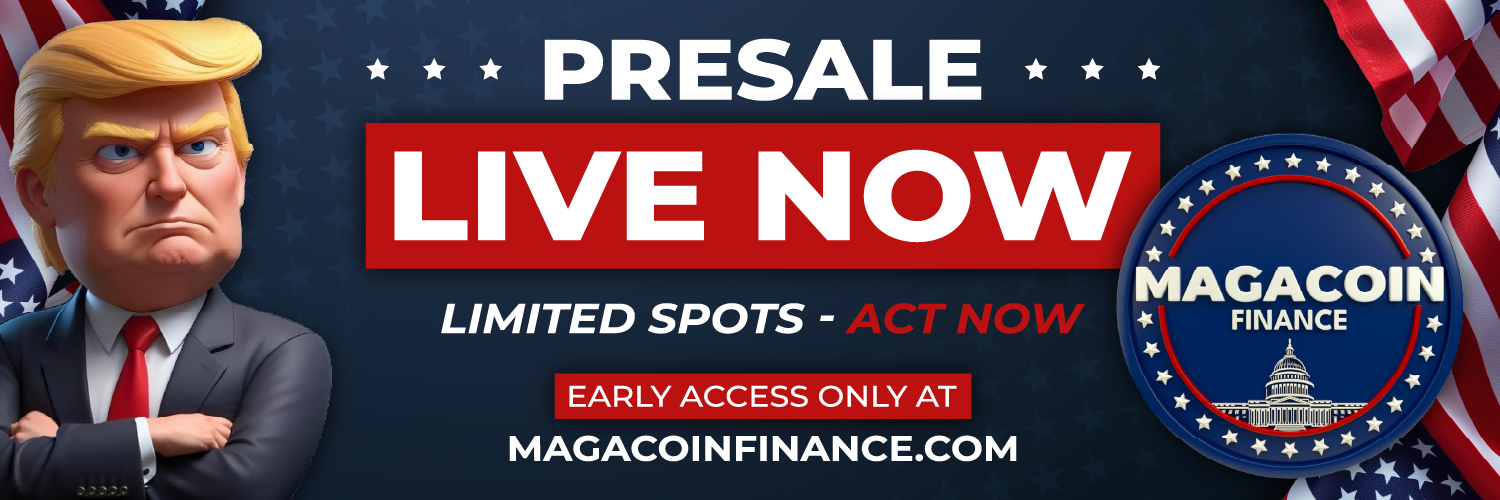In crypto, price can be deceiving. Tokens trading under $1 often get dismissed as speculative scraps, yet history shows they’ve produced some of the market’s most dramatic breakouts. Ripple, Stellar, and even early Dogecoin all started in this bracket before capturing mainstream attention.
Now, analysts are flagging four projects—Cardano (ADA), Pi Network (PI), Kaspa (KAS), and MAGACOIN FINANCE—as undervalued opportunities in 2025. Each faces its own hurdles, but their combination of strong communities, ecosystem upgrades, and technical progress is turning them into serious contenders.
Cardano (ADA): ETF Buzz and Upgrade-Driven Growth
Cardano (ADA) has been one of the most actively discussed altcoins under $1, currently trading between $0.81 and $0.98. The biggest catalyst on the horizon is its ETF application, which analysts believe has up to an 87% chance of approval.
If granted, it could open the floodgates for institutional money, providing the type of liquidity that smaller projects rarely see. At the same time, ADA’s $71 million in community-funded upgrades has reinforced confidence in its future, particularly with Hydra scaling solutions making the network more efficient and cost-effective.
In addition to these milestones, ADA is supported by impressive on-chain metrics. Trading volume has exceeded $5.3 billion in just one week, showing that despite its relatively low price, market participants remain highly engaged.
Analysts are setting short-term targets of $1.50–$1.80 by year-end, but many believe this is just the beginning if broader crypto market sentiment turns bullish. For investors looking for undervalued projects with strong technical and institutional drivers, ADA continues to stand out as a leader under $1.
Pi Network (PI): Unlocks and Long-Term Utility Bets
Pi Network (PI) is one of the more debated tokens on this list, with both bullish supporters and skeptical critics. The main concern is the 164 million token unlock scheduled for September, which has raised fears of oversupply and short-term price weakness.
Indeed, PI has already dropped by more than 80% in the past six months, slipping from recent peaks near $0.40. However, analysts argue that the long-term potential of Pi lies in its growing developer activity and real-world utility focus.
Recent upgrades like v23.01, Linux Node expansion, and biometric security integration are signs that the network is preparing for serious use cases beyond speculation.
While short-term traders may remain cautious, long-term holders point to Pi’s emphasis on open-source transparency and accessibility as key strengths. Its strategy of securing exchange listings also improves liquidity and visibility for new investors.
Analysts suggest that if Pi can balance its supply mechanics with ecosystem adoption, it could stage a significant rebound.
In other words, while the road may be bumpy, PI remains one of the most intriguing undervalued tokens under $1, especially for those who believe in its grassroots community and real-world applications.
Kaspa (KAS): Community-Powered Speed and Scaling
Kaspa (KAS) has carved out its own niche with its blockDAG architecture, which allows it to process transactions quickly while maintaining decentralization.
Unlike traditional blockchain designs, Kaspa’s structure supports higher scalability, making it attractive for developers seeking faster settlement speeds.
Its community-driven nature also gives it an edge—Kaspa has no premine and no venture capital dominance, ensuring that growth is organic rather than manipulated by a handful of investors. This makes it particularly appealing for those who value decentralization and fair participation.
The momentum behind KAS continues to grow, fueled by increasing exchange listings and rising liquidity. Analysts have even compared its trajectory to Solana’s explosive breakout in 2021, suggesting that Kaspa could deliver 5x–10x ROI in 2025 if adoption accelerates.
Grassroots expansion, combined with technical innovations, has created a loyal base of supporters who see KAS as a genuine dark horse in the under-$1 category. For investors searching for a project that blends scalability, speed, and community strength, Kaspa is quickly becoming a standout candidate.
MAGACOIN FINANCE: The Early-Stage Ethereum Play
Most sub-$1 tokens try to piggyback on hype. MAGACOIN FINANCE is playing a different game—positioning itself as an altcoin that moves in step with Ethereum’s infrastructure while keeping its own identity.
That strategy makes it less of a side bet and more of a high-beta amplifier of the crypto market’s hidden gem.
What gives MAGACOIN FINANCE its edge is timing. Entering at the early stages of a market recovery provides room for significant ROI growth that older, already-priced-in assets like KAS, ADA, and PI no longer offer.
As a result, market analysts increasingly see it as a speculative bridge between Ethereum’s maturity and the breakout potential of new entrants.
Conclusion
Altcoins under $1 are often underestimated, but their combination of innovation, affordability, and strong community momentum can make them some of the most rewarding plays in crypto. Cardano’s ETF momentum, Pi Network’s long-term upgrade strategy, and Kaspa’s unique blockDAG scaling model have already established them as undervalued gems to watch in 2025.
Adding MAGACOIN FINANCE to this mix as a high-upside Ethereum-based opportunity completes a compelling picture of hidden gems poised for potential breakout. Together, these tokens highlight how undervaluation today can translate into outsized ROI tomorrow.
To learn more about MAGACOIN FINANCE, visit:
Website: https://magacoinfinance.com
Twitter/X: https://x.com/magacoinfinance
Telegram: https://t.me/magacoinfinance
Disclaimer: This media platform provides the content of this article on an "as-is" basis, without any warranties or representations of any kind, express or implied. We assume no responsibility for any inaccuracies, errors, or omissions. We do not assume any responsibility or liability for the accuracy, content, images, videos, licenses, completeness, legality, or reliability of the information presented herein. Any concerns, complaints, or copyright issues related to this article should be directed to the content provider mentioned above.








